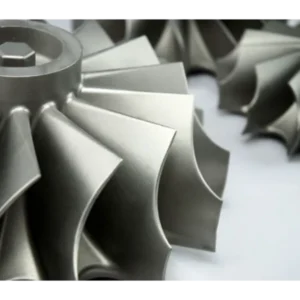Die Casting Process Overview
1. What is Die Casting?
Die casting is a precision manufacturing process where molten metal is injected under high pressure into a steel mold, known as a die, to produce complex and detailed metal parts. This method is renowned for its ability to produce high-quality, high-volume parts with excellent dimensional accuracy and surface finish.
1.1. How Does the Die Casting Process Work?
The die casting process involves several key steps:
Mold Preparation: The die is coated with a lubricant to facilitate the removal of the finished part and to extend the life of the mold.
Injection: Molten metal is injected into the die cavity under high pressure.
Cooling: The metal solidifies quickly as it cools in the mold.
Ejection: The die is opened, and the solidified part is ejected.
Trimming: Any excess material, such as flash, is trimmed away from the finished part.
1.2. What Types of Die Casting Are Available?
There are several types of die casting processes:
- High Pressure Die Casting (HPDC):Involves injecting molten metal into the die at high pressure, suitable for producing complex and lightweight parts.
- Low Pressure Die Casting (LPDC): Utilizes lower pressure to fill the die, typically used for larger and thicker parts.
- Gravity Die Casting: Molten metal is poured into the die using gravity, suitable for simple shapes and structures.
1.3. What Materials Can Be Used in Die Casting?
Die casting can employ a variety of metals, including:
- Aluminum Die Casting: Lightweight, corrosion-resistant, and excellent for intricate designs.
- Zinc Die Casting: High strength and ductility, ideal for small and complex parts.
- Magnesium Die Casting: Lightweight and high strength-to-weight ratio.
- Copper and Brass Die Casting: Offers excellent electrical and thermal conductivity.
1.4. What Are the Size Limitations in Die Casting?
Die casting can produce a wide range of part sizes, from small components weighing just a few grams to larger parts weighing several kilograms. The size limitations are primarily determined by the capacity of the die casting machine and the complexity of the part.
2. What is the Range of Surface Coatings for Die Cast Parts?
Die cast parts can be finished with various surface coatings to enhance their properties:
- Electroplating: Improves corrosion resistance and surface appearance.
- Anodizing: Particularly for aluminum, enhancing corrosion resistance and surface hardness.
- Powder Coating: Provides a durable and decorative finish.
- Painting: Adds color and additional protection.
3. What Are the Dimensions Accuracy and Roughness in Die Casting?
Die casting offers high dimensional accuracy and fine surface finishes:
Dimensional Accuracy: Typically within ±0.002 inches (±0.05 mm) for small parts.
Surface Roughness: Achievable surface finishes range from 32 to 63 microinches Ra (0.8 to 1.6 µm).
4. What Are the Quality Measuring Methods for Die Cast Parts?
Ensuring the quality of die cast parts involves several inspection methods:
Dimensional Inspection: Using precision measuring tools and coordinate measuring machines (CMM).
Non-Destructive Testing (NDT): Techniques such as X-ray, ultrasonic testing, and dye penetrant inspection to detect internal and surface defects.
Material Testing: Chemical and mechanical testing to verify material properties.
Visual Inspection: Checking for surface defects and overall appearance.
5. What Are the Tool Costs for Die Casting?
Tooling costs for die casting can be significant:
Die Creation: The initial creation of the die can be expensive due to the precision required.
Maintenance and Repair: Ongoing costs to maintain and repair the die.
Overall Cost: While initial tooling is high, the cost per part decreases significantly with higher production volumes.
6. What Are the Benefits of Die Casting?
Die casting offers numerous advantages:
High Precision: Excellent dimensional accuracy and detail.
Efficiency: Suitable for high-volume production runs.
Material Efficiency: Minimal waste compared to other processes.
Versatility: Wide range of materials and complex geometries.
6.1. What Should Be Considered When Choosing Die Casting?
Considerations when choosing die casting include:
Part Complexity: Ideal for intricate and complex designs.
Material Requirements: Ensure the material used meets the application’s demands.
Production Volume: Higher volumes can offset initial tooling costs.
Lead Time: The process involves multiple steps, which can affect lead time.
7. How Does Die Casting Compare with Other Processing Methods?
Die casting vs. other methods:
Investment Casting: Die casting offers faster production rates and is more cost-effective for high volumes, but investment casting can achieve even finer details.
Sand Casting: Die casting provides better surface finishes and tighter tolerances.
Machining: Die casting can produce near-net-shape parts, reducing the need for extensive machining.
8. Why Choose Welleshaft for Your Die Casting Needs?
Choosing Welleshaft for die casting provides several benefits:
Expertise: Extensive experience and knowledge in precision die casting.
Quality Assurance: Rigorous quality control measures ensure high standards.
Customization: Ability to produce custom parts to meet specific requirements.
Advanced Technology: Utilization of modern techniques and equipment for superior results.
Customer Service: Dedicated support throughout the entire process, from design to delivery.
By understanding the intricacies and advantages of die casting, you can make informed decisions for your manufacturing needs, ensuring the best quality and performance for your products.










Reviews
There are no reviews yet.